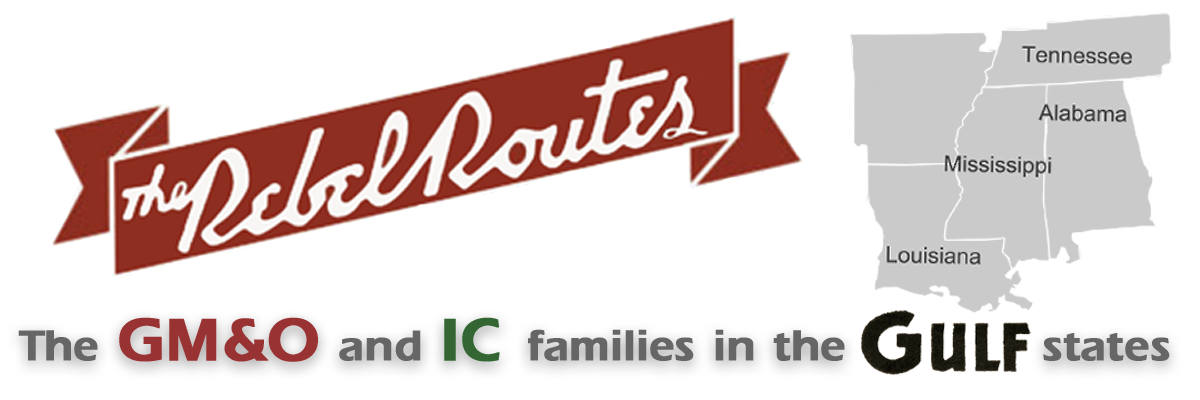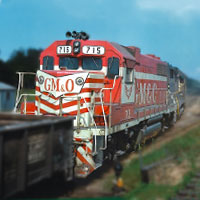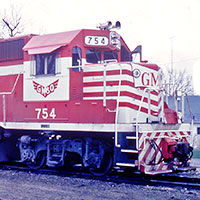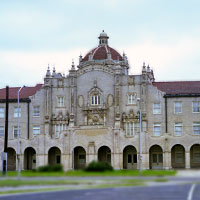
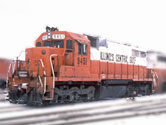

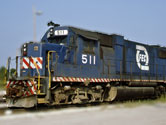




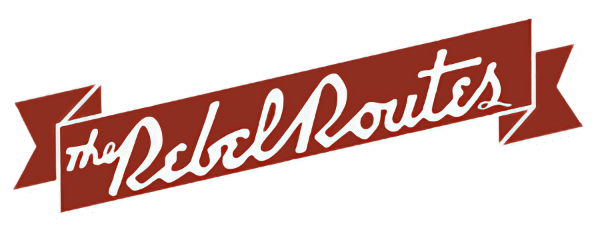
Gulf, Mobile & Ohio
The Route of the Rebel
A progressive road in a vital north-south market, the Rebel Route made its presence known in Southern railroading by shedding aging steam movers, embracing modern motive power early in the transition, and trimming from its inherited lines unnecessary branches and routes. After the War, acquiring the Alton made the system a second mainline through mid-America: reaching Chicago from Mobile and New Orleans, and giving its famous rival Illinois Central a run for its money.
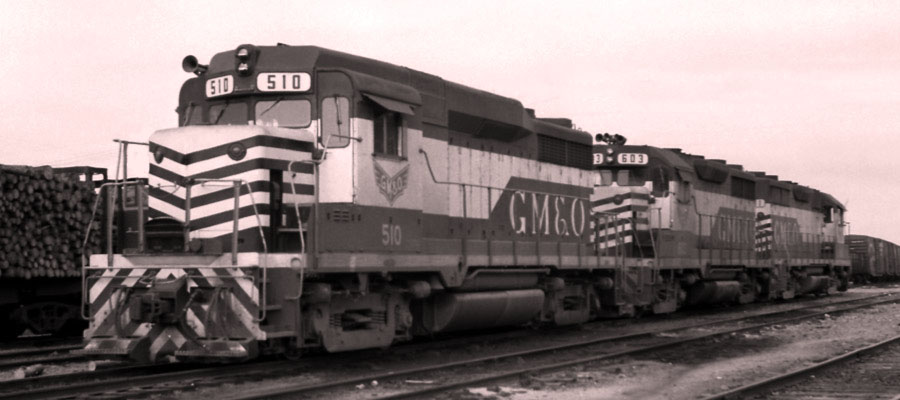
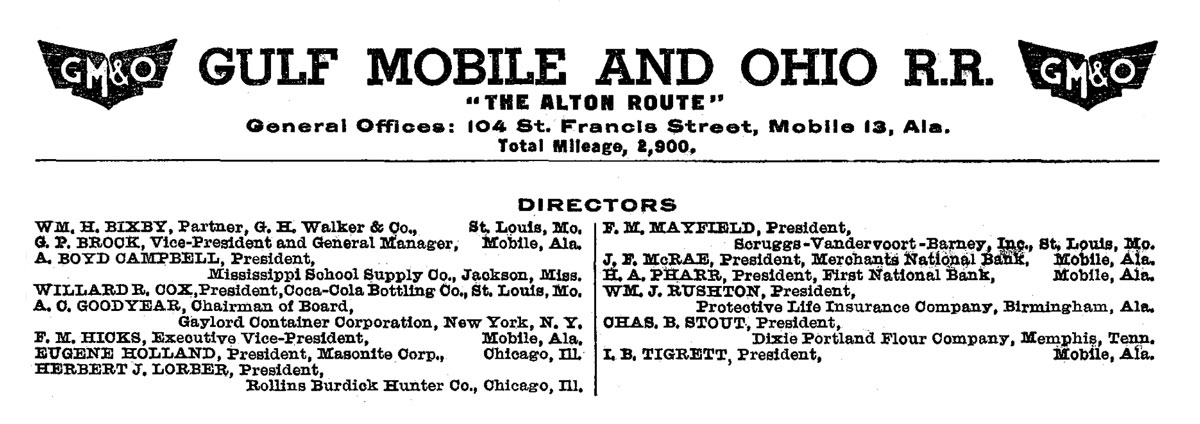
collection
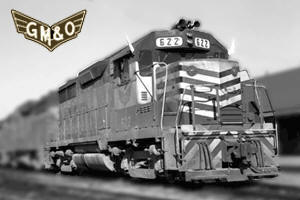
 reated in 1940, the Gulf, Mobile & Ohio Railroad was brought into being by the merger of two parallel regionals running south to north: newcomer Gulf, Mobile & Northern and the bankrupt veteran Mobile & Ohio.
Both predecessor roads served the Gulf Coast ports — Mobile and New Orleans — and both laid rails northward to inland city markets in Tennessee, Kentucky. and Missouri. The older and longer M&O built as for north as St. Louis; the GM&N built to Jackson, Tennessee, with trackage rights as far as Paducah, Ky.
Brought together under the leadership of President "Ike" Tigrett of Jackson, Tn, the new GM&O system spanned 2000 miles and offered the parallel Illinois Central lines a legitimate competitor in the Gulf to Great Lakes market for people and goods.
Less than a decade later, following the War, in 1947, the expanding GM&O purchased the Alton Railroad, creating a 3000 mile north-south rail system serving America's middle states and offering a direct trunk line service between the great gateways of commerce and industry of this region.
Like the Southern Railway, the GM&O was one of the first major railroad systems to dieselize. All of its aging steam motive power was inherited from its predecessors, and the fires dropped completely in the fall of 1949. Both Alco and EMD first generation "motors" were purchased to bring the road into the modern era.
reated in 1940, the Gulf, Mobile & Ohio Railroad was brought into being by the merger of two parallel regionals running south to north: newcomer Gulf, Mobile & Northern and the bankrupt veteran Mobile & Ohio.
Both predecessor roads served the Gulf Coast ports — Mobile and New Orleans — and both laid rails northward to inland city markets in Tennessee, Kentucky. and Missouri. The older and longer M&O built as for north as St. Louis; the GM&N built to Jackson, Tennessee, with trackage rights as far as Paducah, Ky.
Brought together under the leadership of President "Ike" Tigrett of Jackson, Tn, the new GM&O system spanned 2000 miles and offered the parallel Illinois Central lines a legitimate competitor in the Gulf to Great Lakes market for people and goods.
Less than a decade later, following the War, in 1947, the expanding GM&O purchased the Alton Railroad, creating a 3000 mile north-south rail system serving America's middle states and offering a direct trunk line service between the great gateways of commerce and industry of this region.
Like the Southern Railway, the GM&O was one of the first major railroad systems to dieselize. All of its aging steam motive power was inherited from its predecessors, and the fires dropped completely in the fall of 1949. Both Alco and EMD first generation "motors" were purchased to bring the road into the modern era.
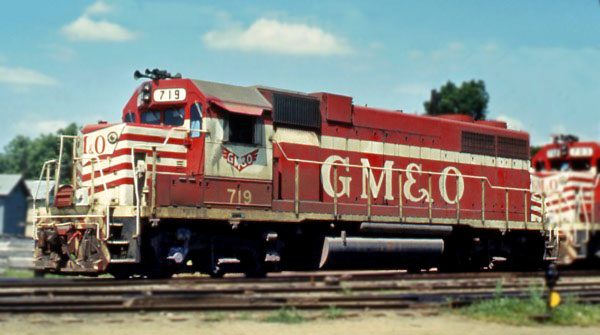 On August 10, 1972, the Gulf, Mobile and Ohio Railroad merged into the Illinois Central Railroad, forming the massive 9600-mile north-south Illinois Central Gulf Railroad. The ICG
would find itself saddled with unprofitable east-west routes along its north-south corridor; making use of the Staggers Act after 1980, the Chicago-based system spun-off many of its secondary lines, including the bulk of the former GM&O mainline and secondary trackage. Although the ICG merger had been billed as a merger, in hindsight — for the GM&O at least — it was a merger with a subsequent liquidation. Although a handful of GM&O trackage is stil operated, most of the sytem has been abandoned. Kansas City Southern subsidiary Gateway Western operates the Springfield to Kansas City route; through acquisitions, Union Pacific has the Joliet to Saint Louis segment. In the south, several segments remain in operation by Kansas City Southern or recent shortlines. Chronicling those former GM&O lines, in Mississippi, Louisiana, and Alabama, is the heart of our "Rebel Routes" family tree collection.
On August 10, 1972, the Gulf, Mobile and Ohio Railroad merged into the Illinois Central Railroad, forming the massive 9600-mile north-south Illinois Central Gulf Railroad. The ICG
would find itself saddled with unprofitable east-west routes along its north-south corridor; making use of the Staggers Act after 1980, the Chicago-based system spun-off many of its secondary lines, including the bulk of the former GM&O mainline and secondary trackage. Although the ICG merger had been billed as a merger, in hindsight — for the GM&O at least — it was a merger with a subsequent liquidation. Although a handful of GM&O trackage is stil operated, most of the sytem has been abandoned. Kansas City Southern subsidiary Gateway Western operates the Springfield to Kansas City route; through acquisitions, Union Pacific has the Joliet to Saint Louis segment. In the south, several segments remain in operation by Kansas City Southern or recent shortlines. Chronicling those former GM&O lines, in Mississippi, Louisiana, and Alabama, is the heart of our "Rebel Routes" family tree collection.
Remembered today as "the Route of the Rebel," the Gulf, Mobile & Ohio remains a favorite among railfans and historians alike.
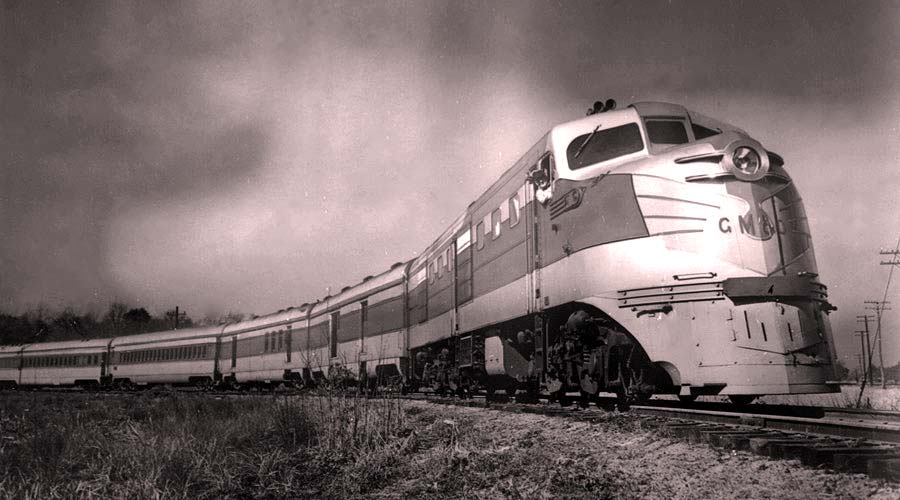
collection
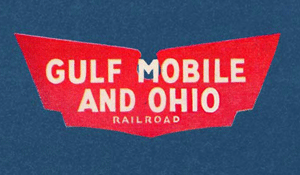
at a glance
| 1929 | 1971 | ||
|---|---|---|---|
| Miles operated | 1808 | 2734 | |
| Locomotives | 180 | 258 | |
| Passenger cars | 96 | 92 | |
| Freight cars | 6255 | 12,699 | |
| Service cars | 144 | ___ | |
| Reporting marks | GM&O | ||
| Headquarters | Mobile, Al | ||
| Named trains | Rebel, Abraham Lincoln, Ann Rutledge, Alton Limited | ||
| Affiliated roads | Mississippi Export New Orleans Great Northern | ||
| Successors | Illinois Central Gulf, Illinois Central | ||

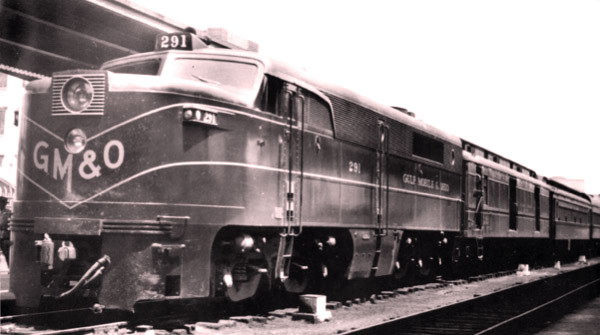
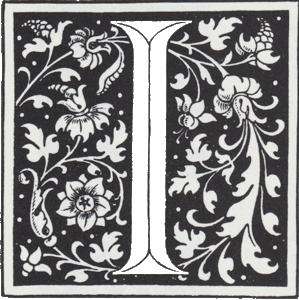 n a period when many older and presumably stronger rail systems either were making slow progress or were losing ground financially, the GM&O was creating, out of bankrupt pieces of rail lines, a strong coordinated rail system, which, up through 1952 was successful financially. Another of the unusual features of its growth was that this program developed out of a company whose assets were excessively weak. The parent road was in such wretched shape in its early days that the major banking houses of the territory served by the road did not consider it a safe place even for operating capital. In spite of this, in spite of the greatest depression known to American railroads, in spite of the opposition of some of the strongest railroad systems in the country, a merger program took shape and progressed to the position in which we found the GM&O in 1952.
n a period when many older and presumably stronger rail systems either were making slow progress or were losing ground financially, the GM&O was creating, out of bankrupt pieces of rail lines, a strong coordinated rail system, which, up through 1952 was successful financially. Another of the unusual features of its growth was that this program developed out of a company whose assets were excessively weak. The parent road was in such wretched shape in its early days that the major banking houses of the territory served by the road did not consider it a safe place even for operating capital. In spite of this, in spite of the greatest depression known to American railroads, in spite of the opposition of some of the strongest railroad systems in the country, a merger program took shape and progressed to the position in which we found the GM&O in 1952.
James A. Lemly, 1953


from Handbook of American Railroads
by Robert G. Lewis - 1951 / collection
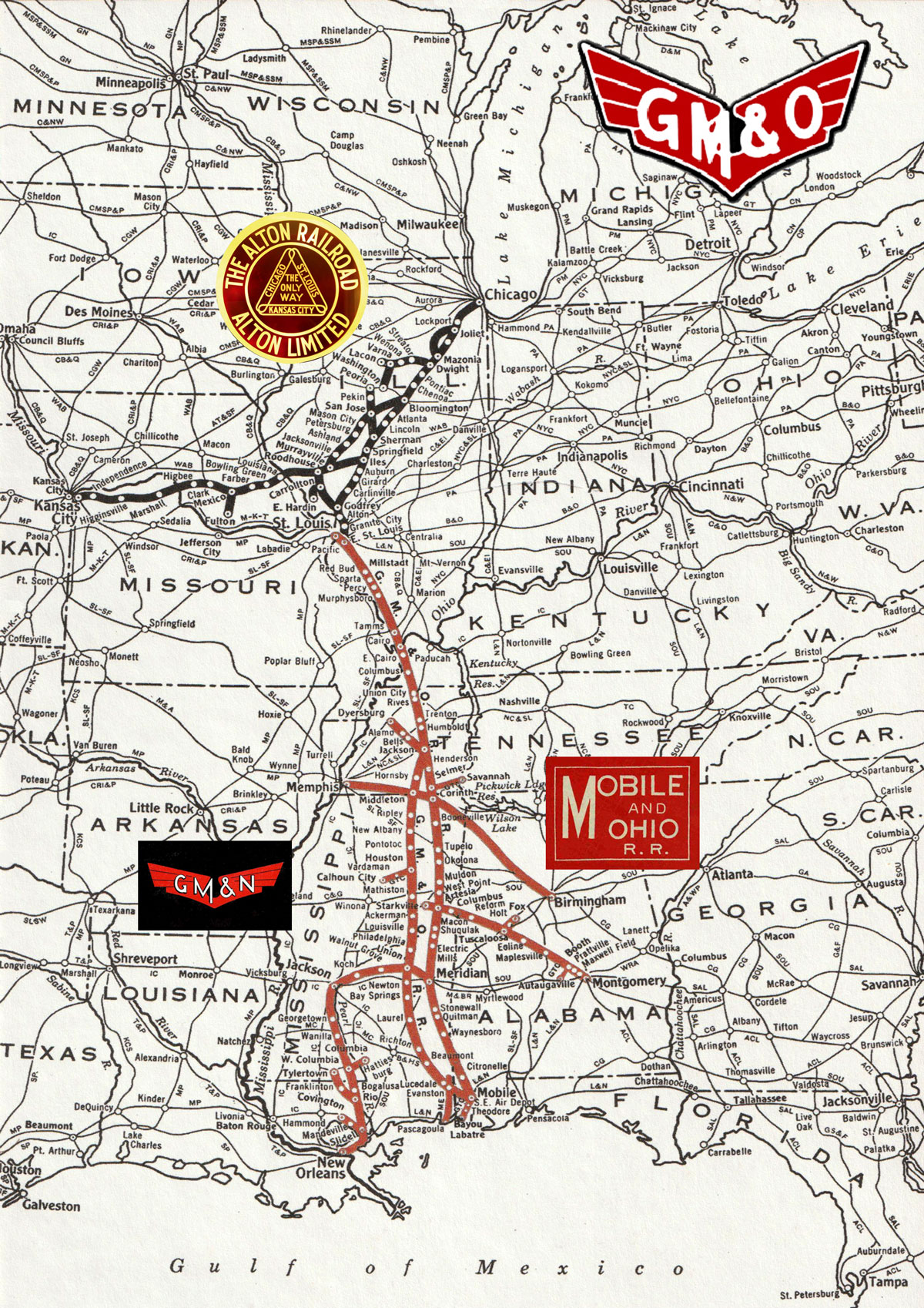
GMO system map with predecessors / RWH

See also these related scrapbooks:
- predecessor New Orleans Great Northern Railroad
- predecessor Gulf Mobile & Northern Railroad
- predecessor Mobile & Ohio Railroad
- merger partner Illinois Central Railroad
- successor Illinois Central Gulf Railroad
Scrapbooks

Artesia, Ms / collection
Publications
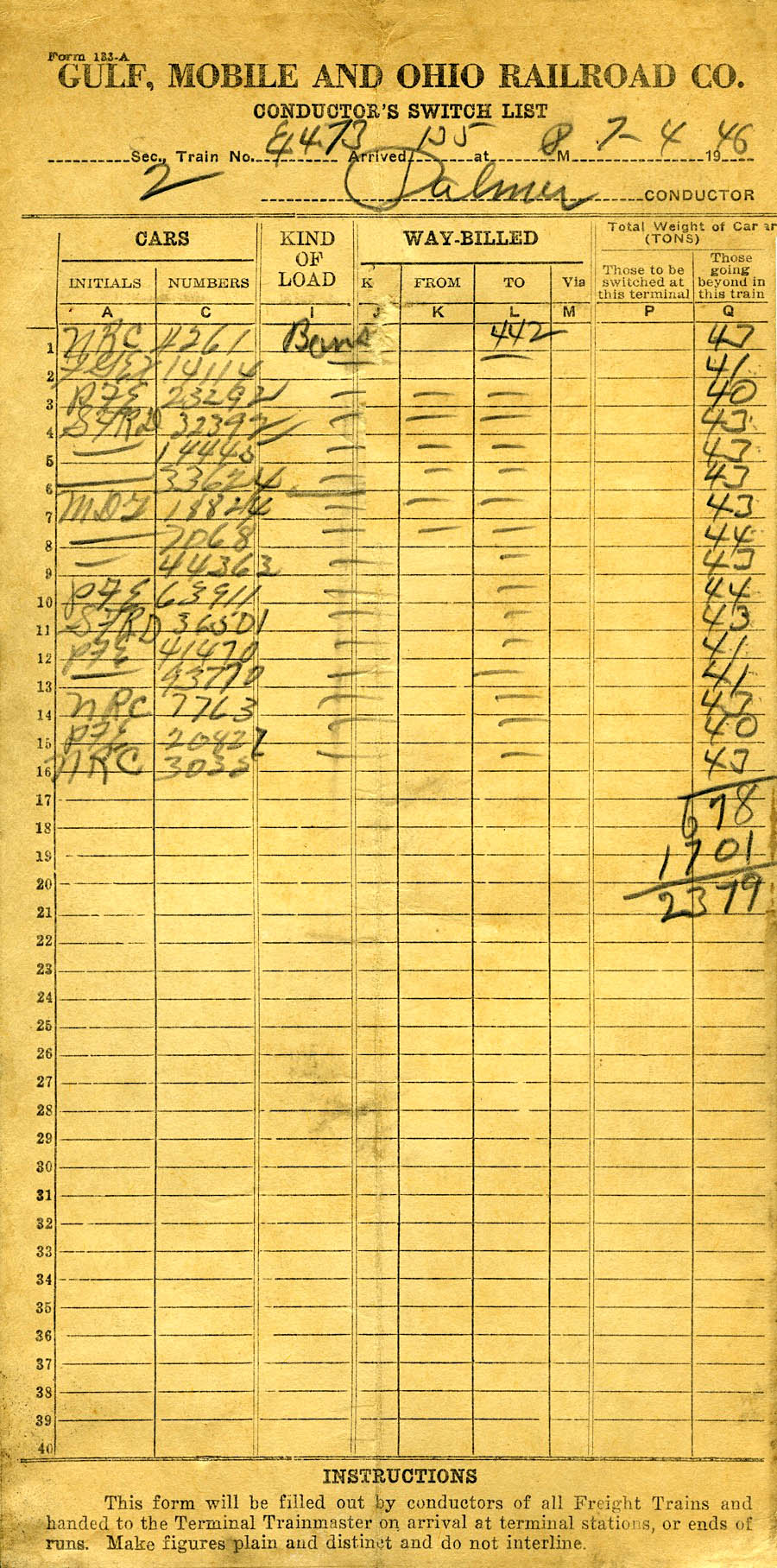
1946 switch list / collection

1943 timetable / collection

1941 Official Guide map / collection
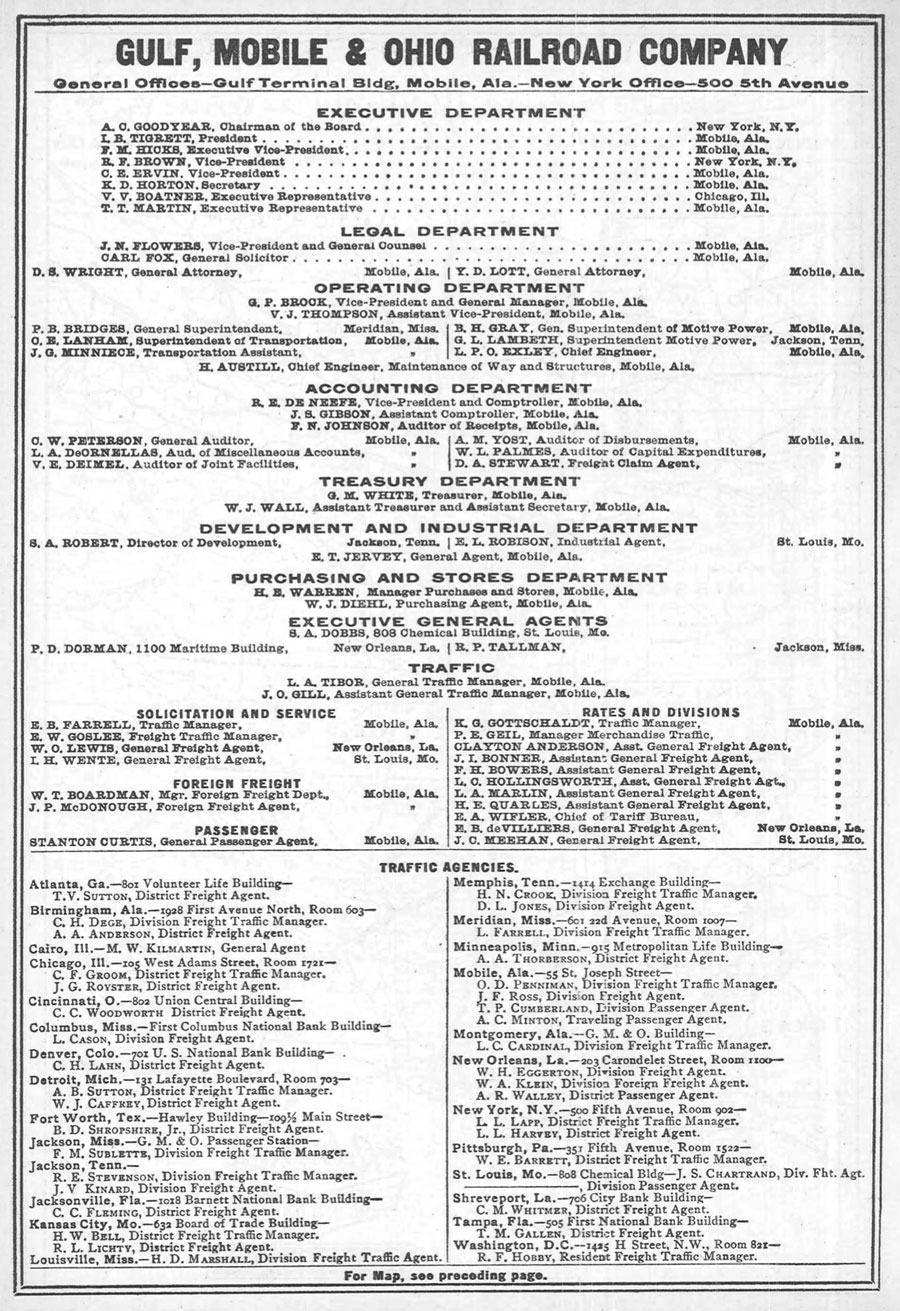
1941 Official Guide ad / collection
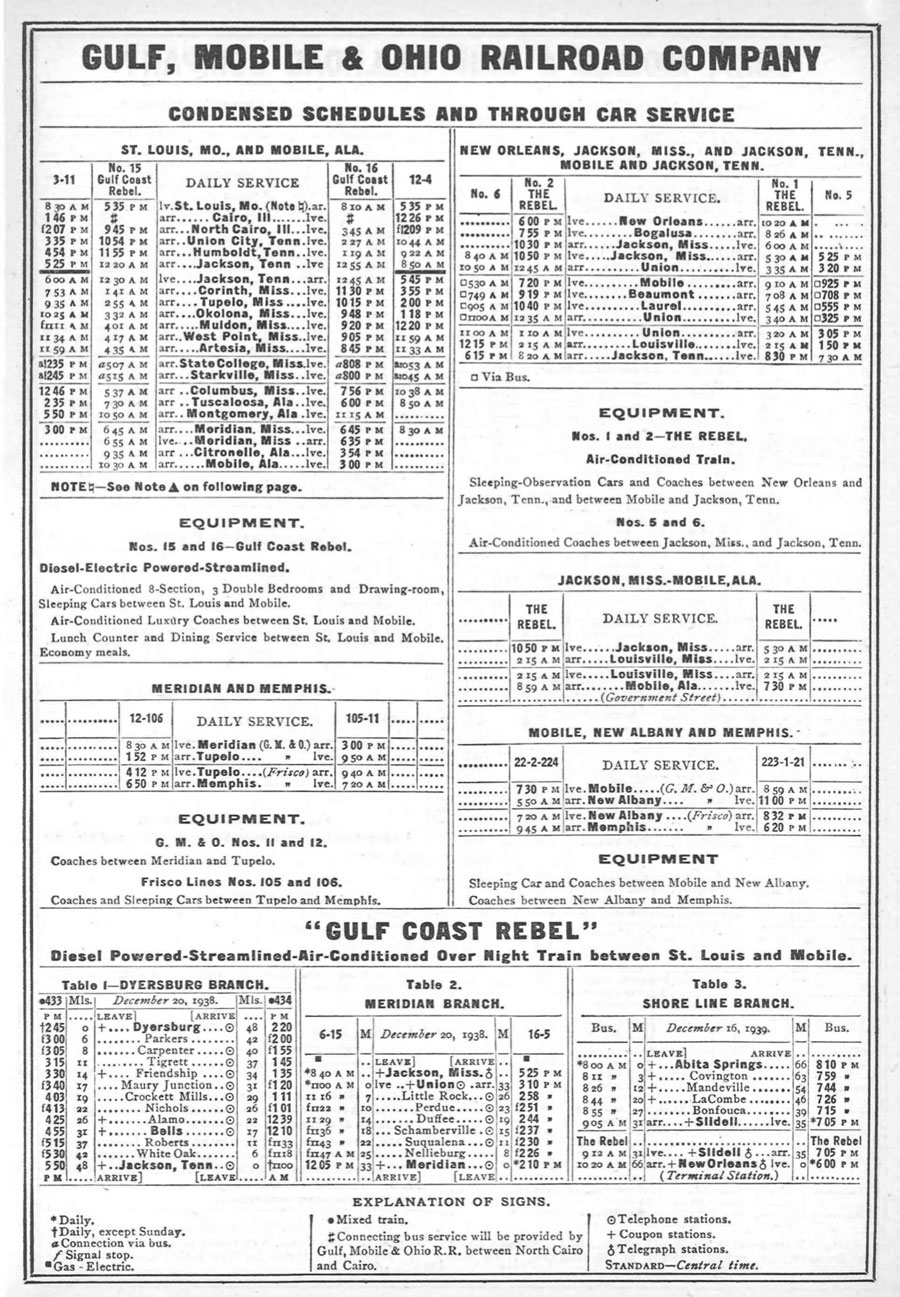
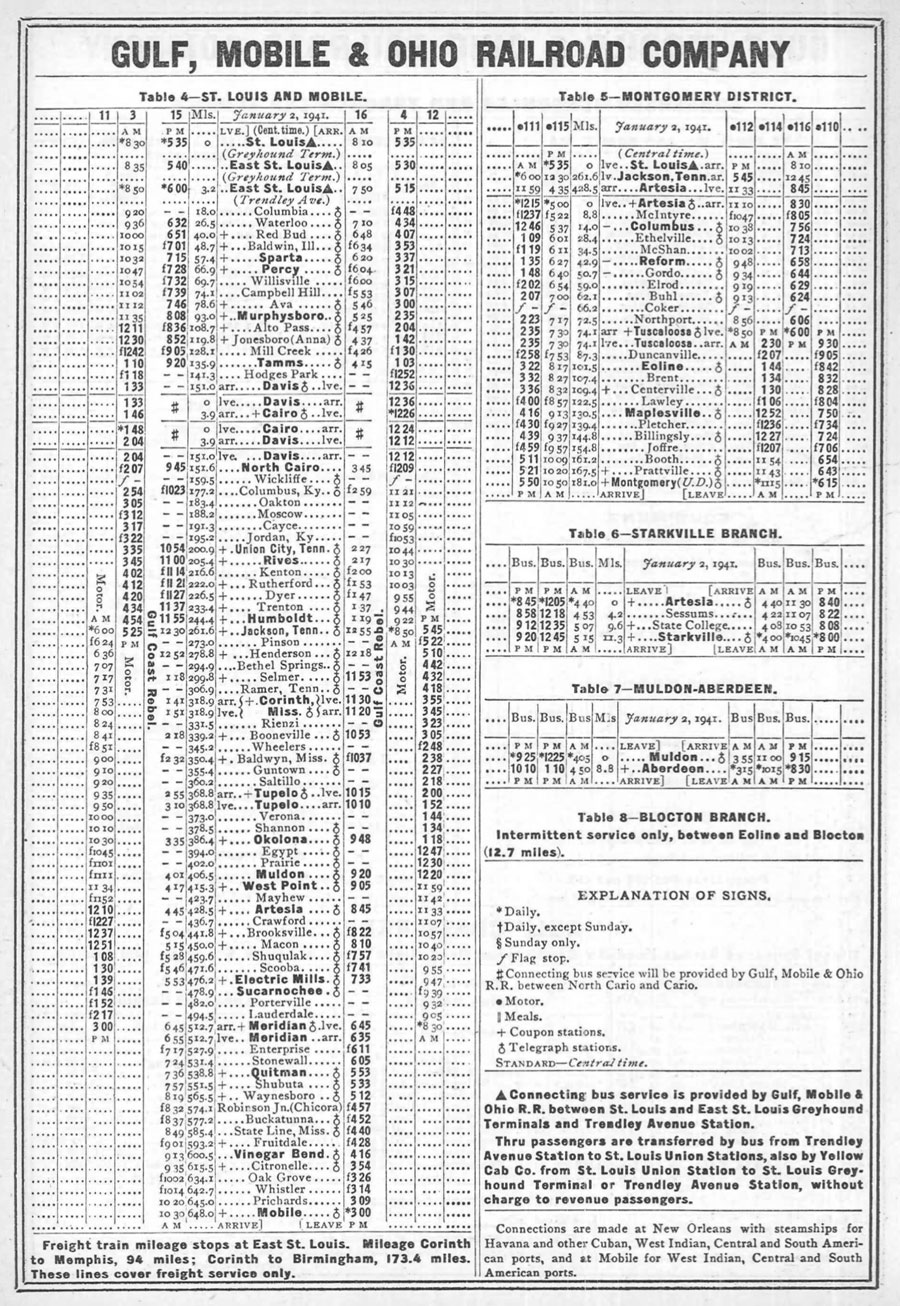
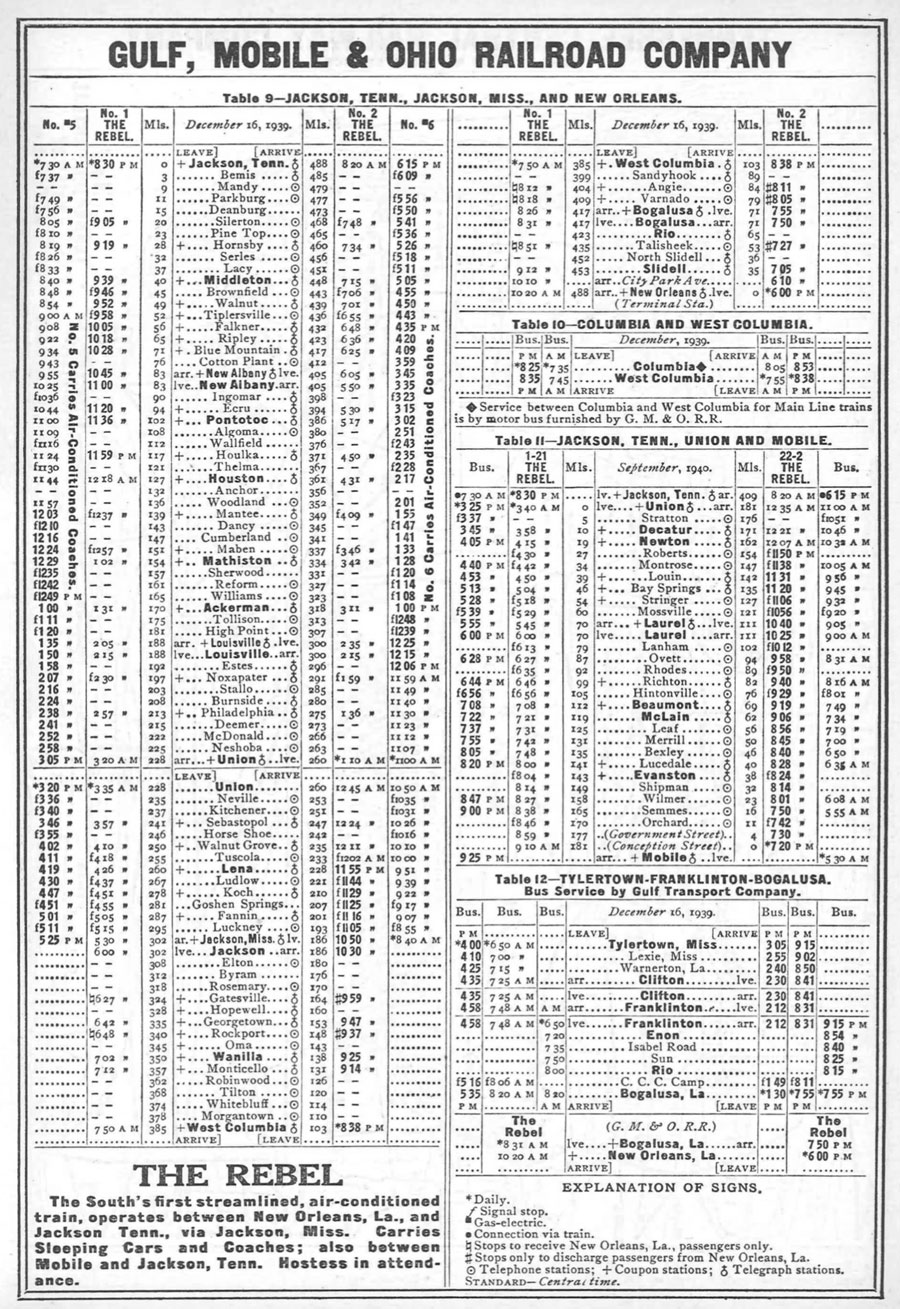
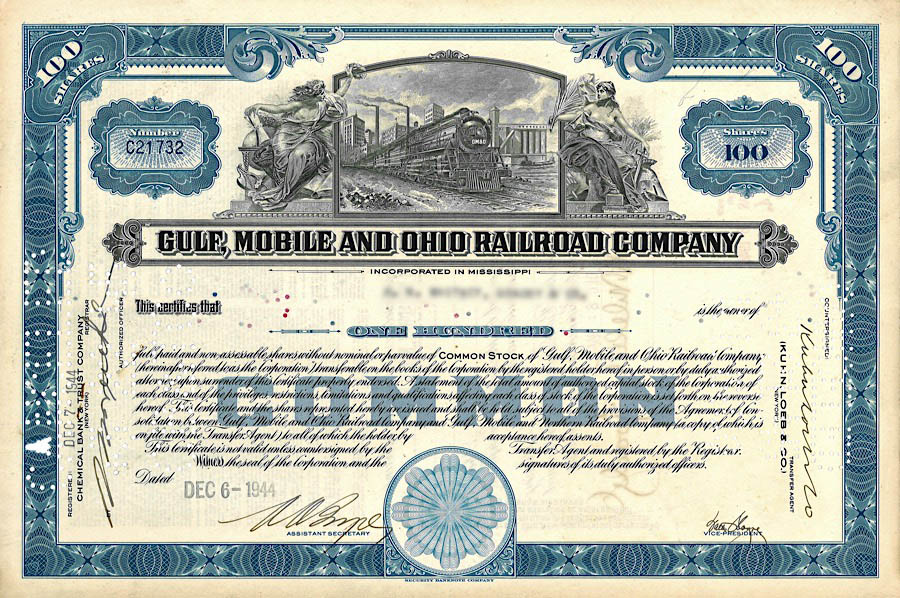
stock certificate / collection
 Scrapbook
Scrapbook
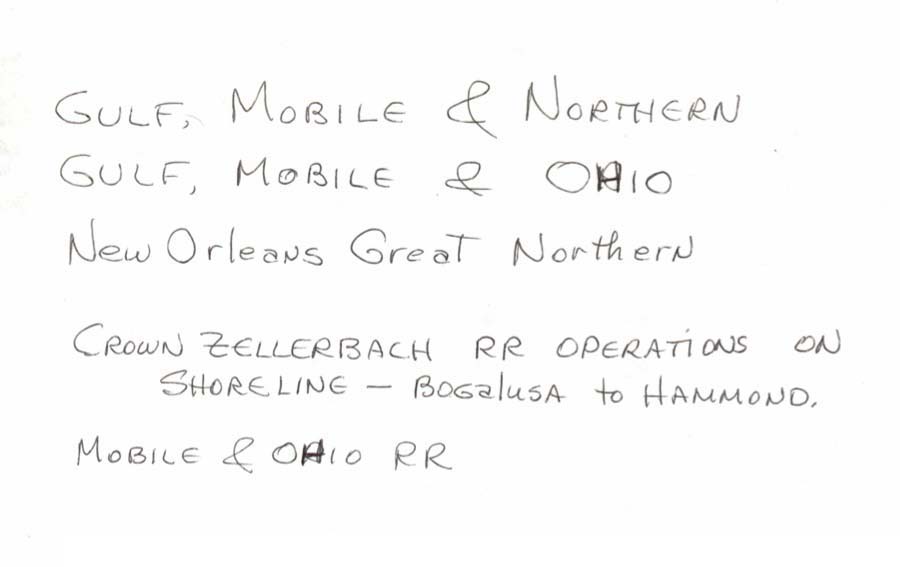
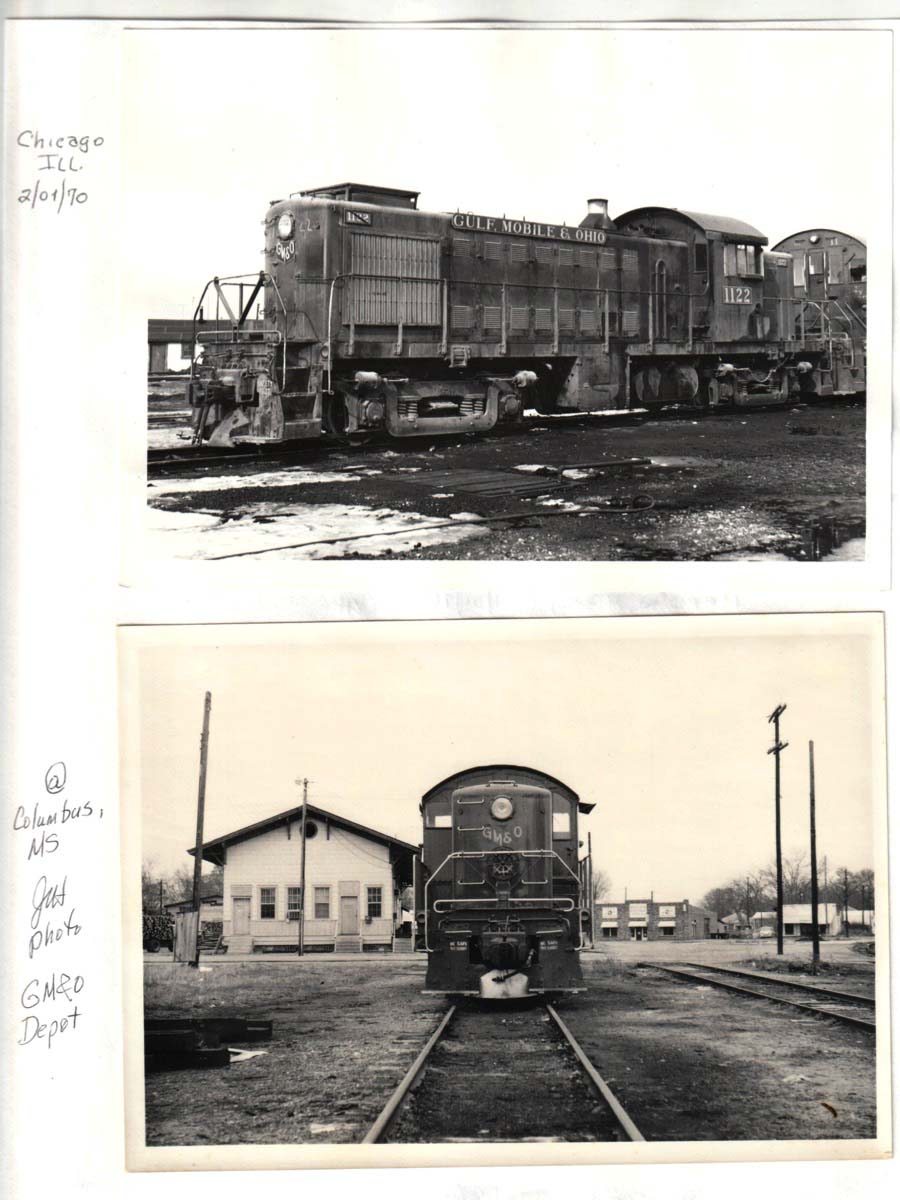
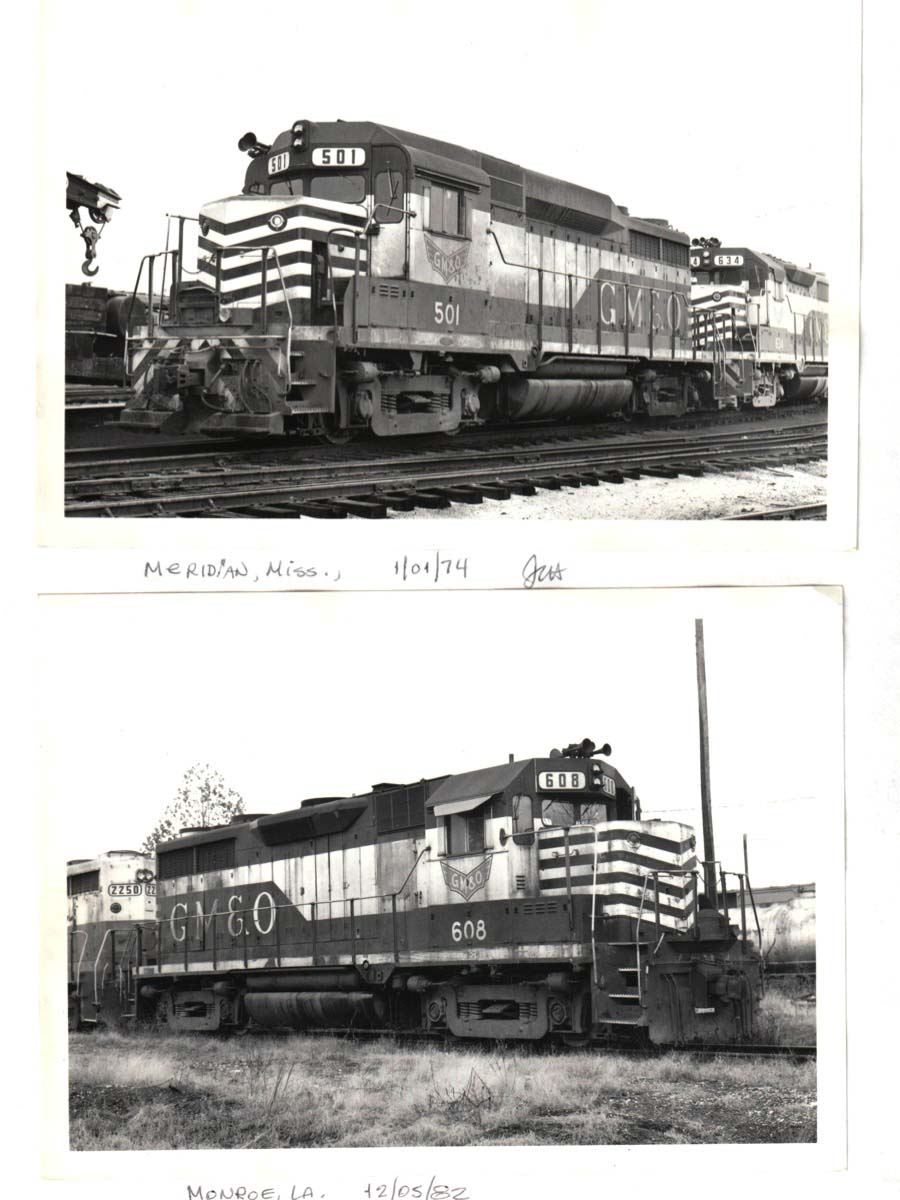
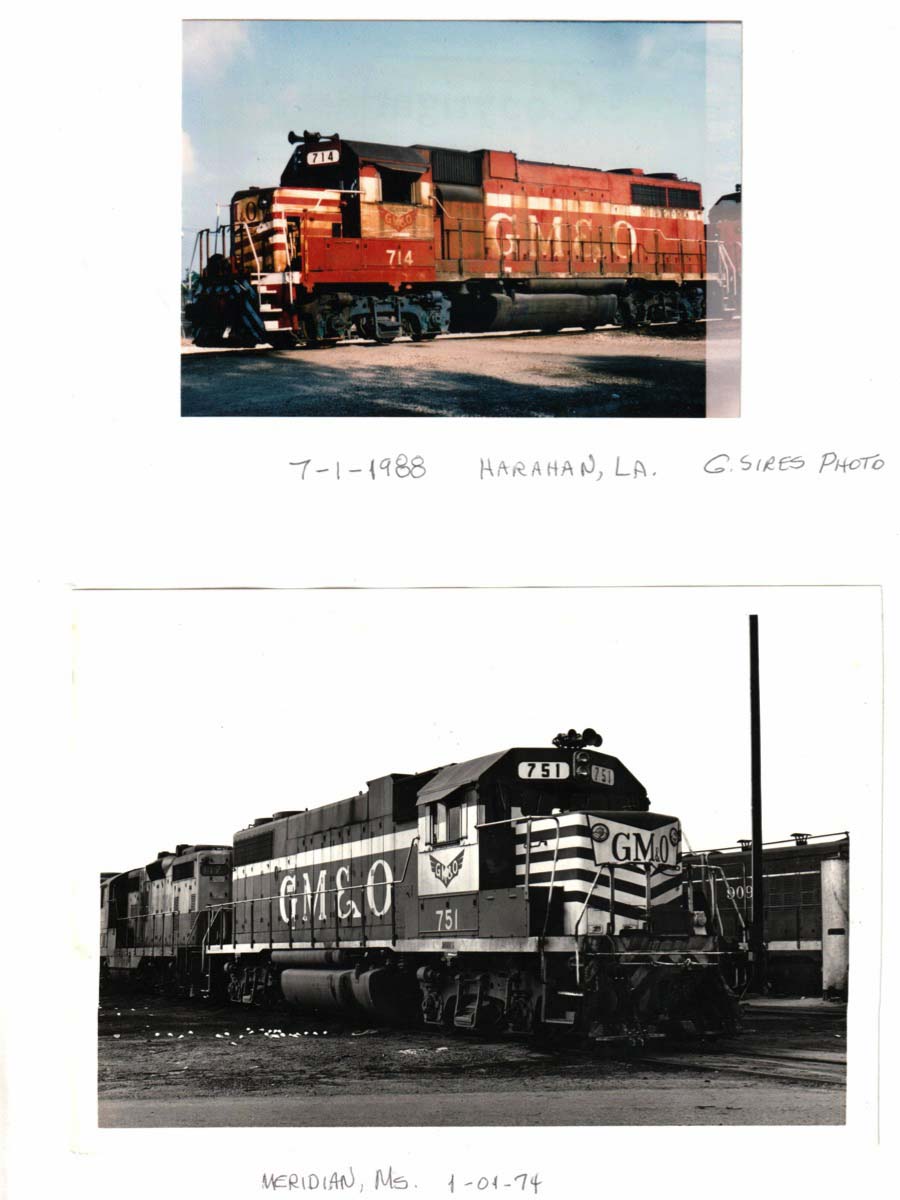

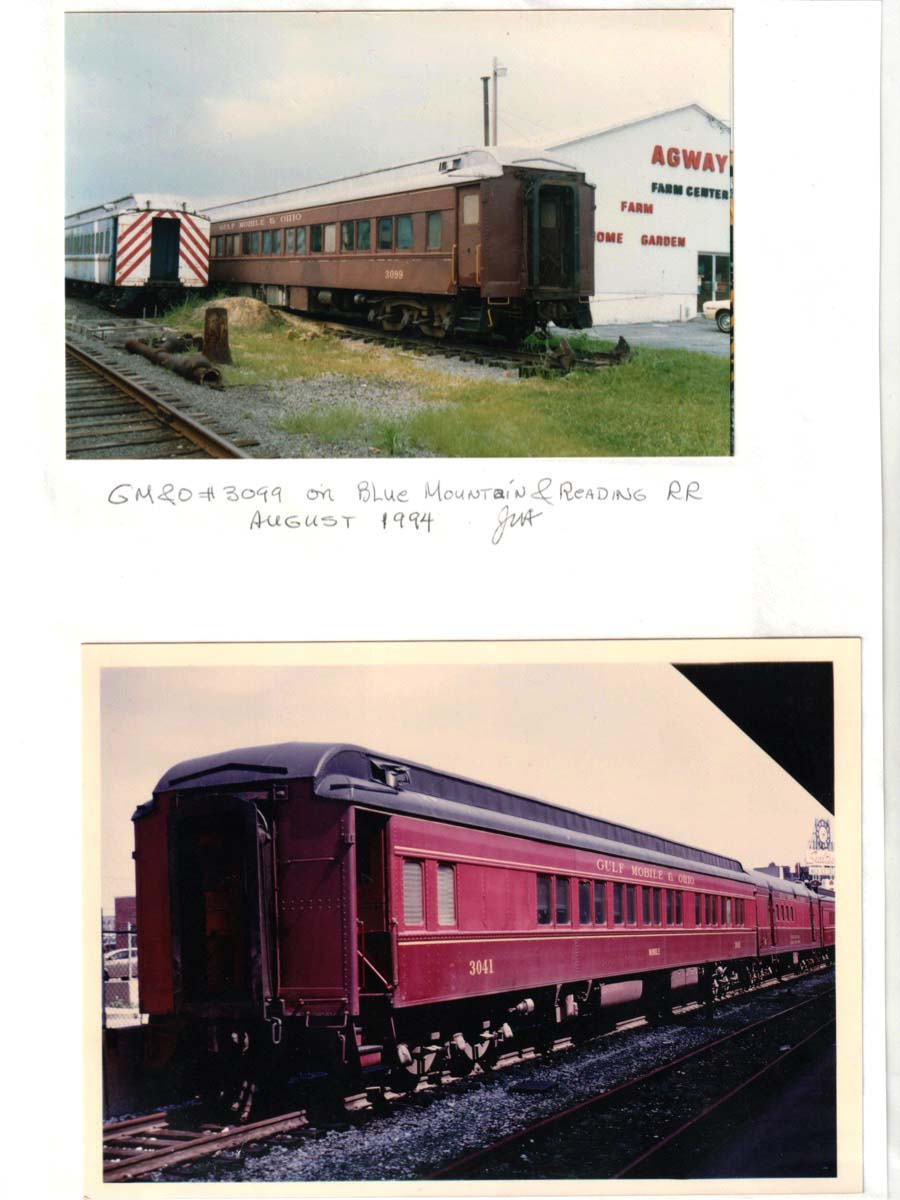



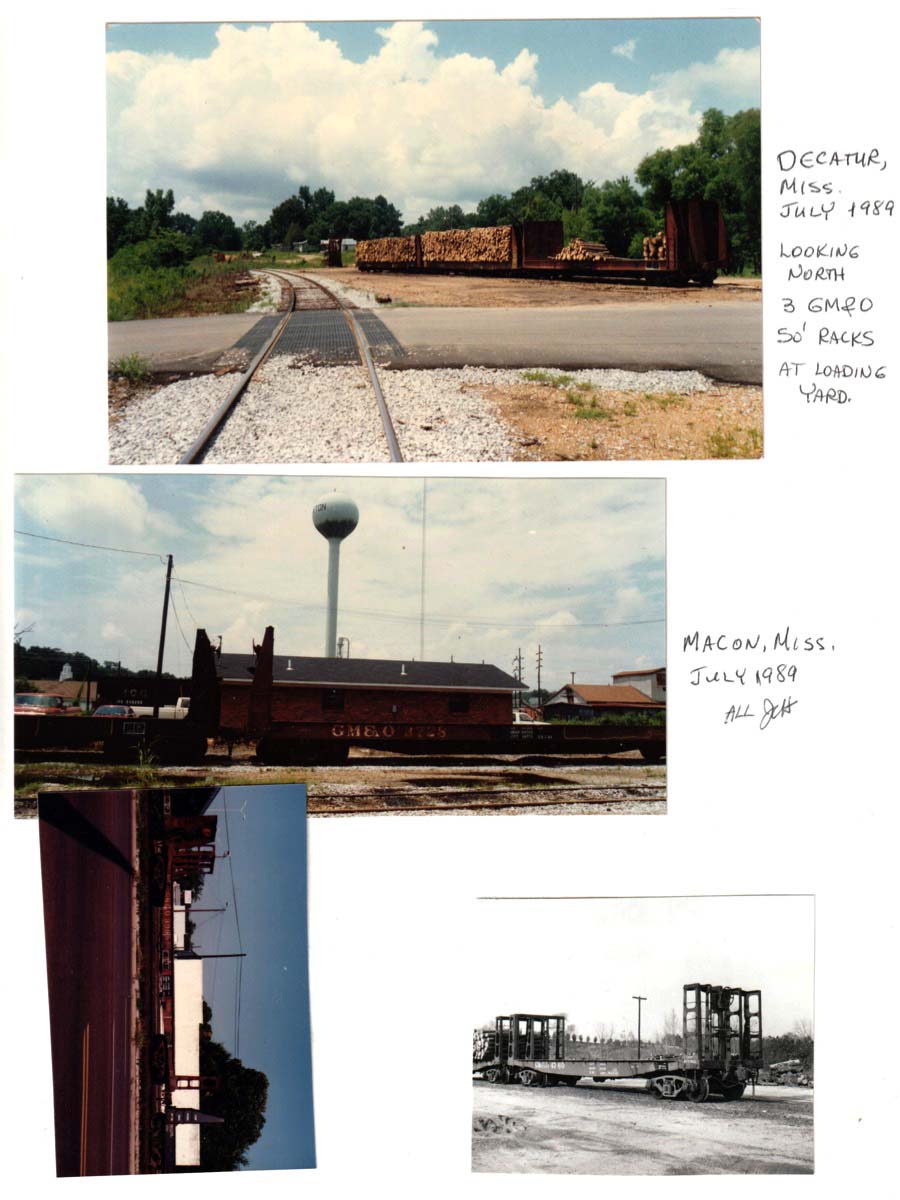
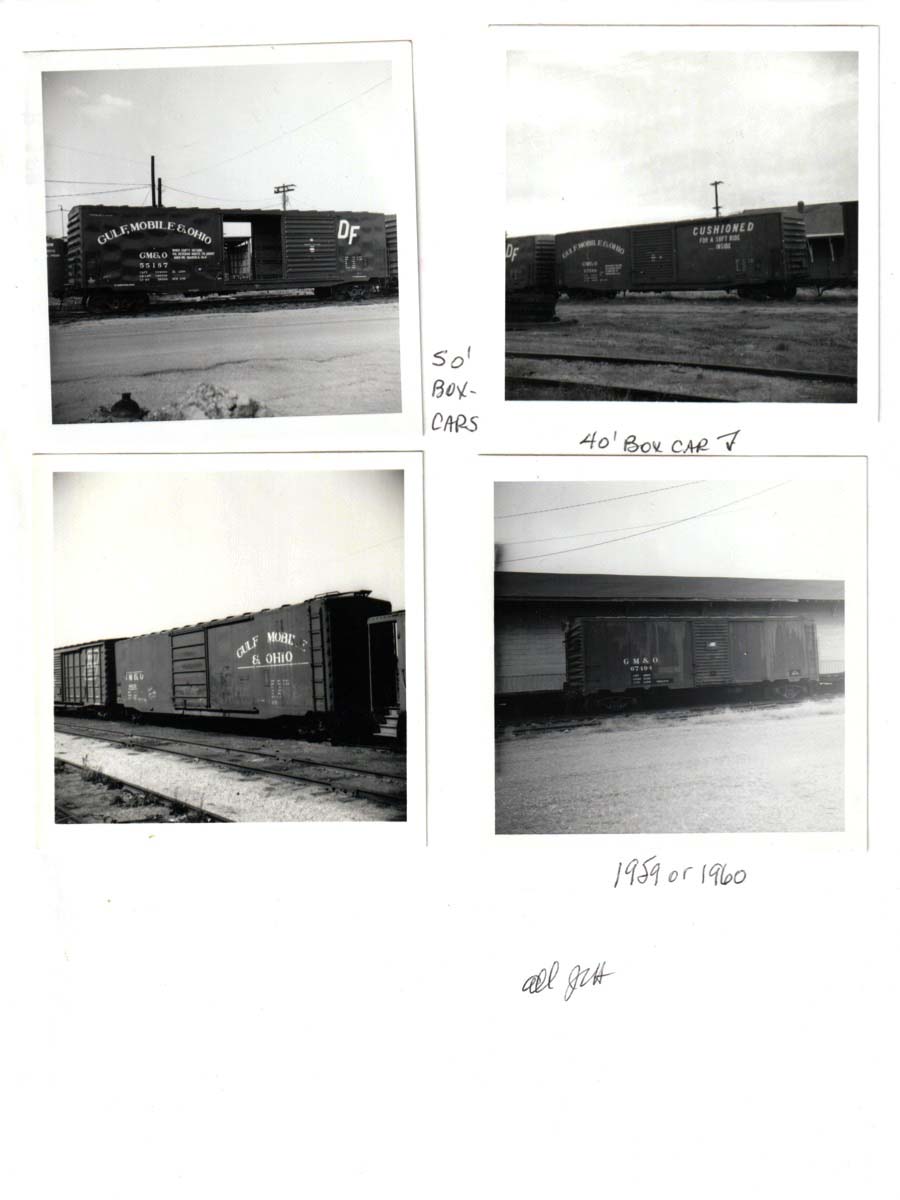
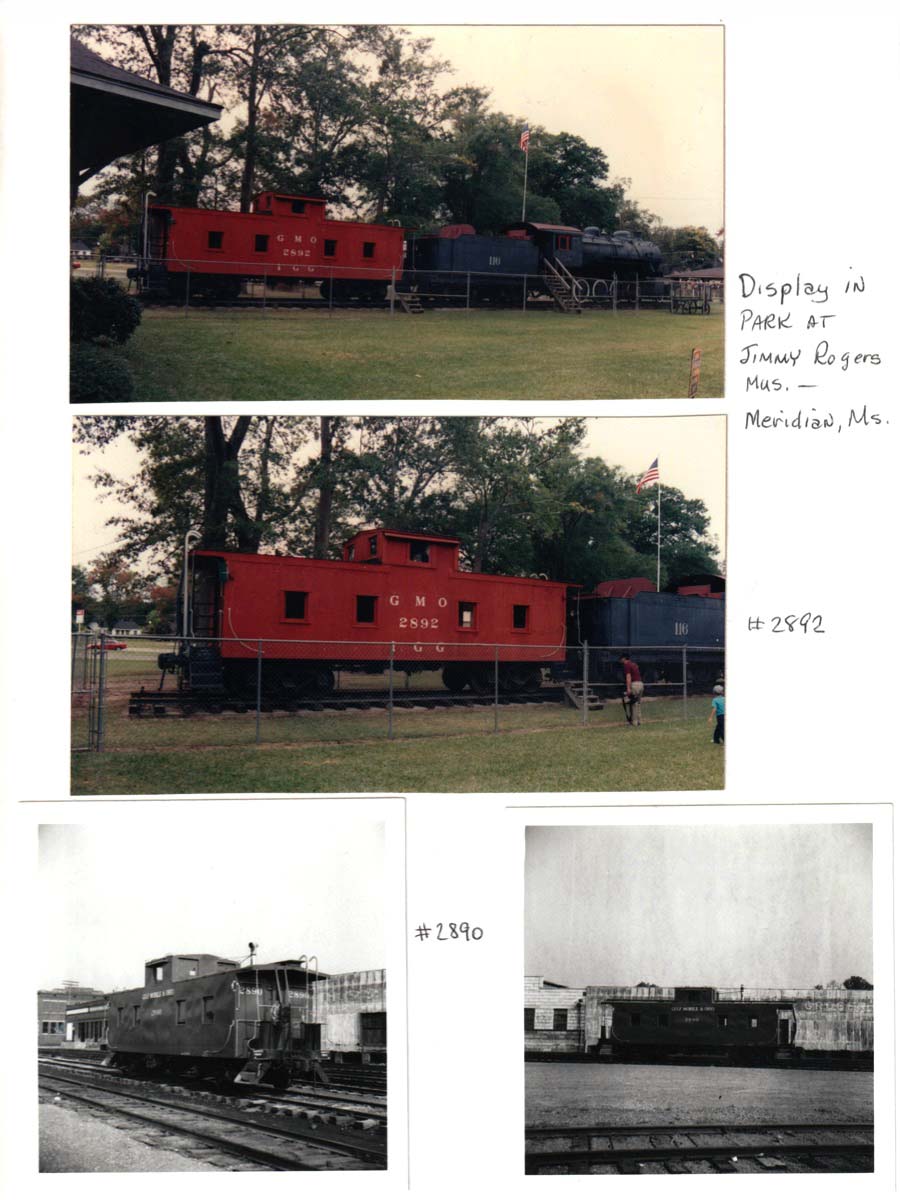
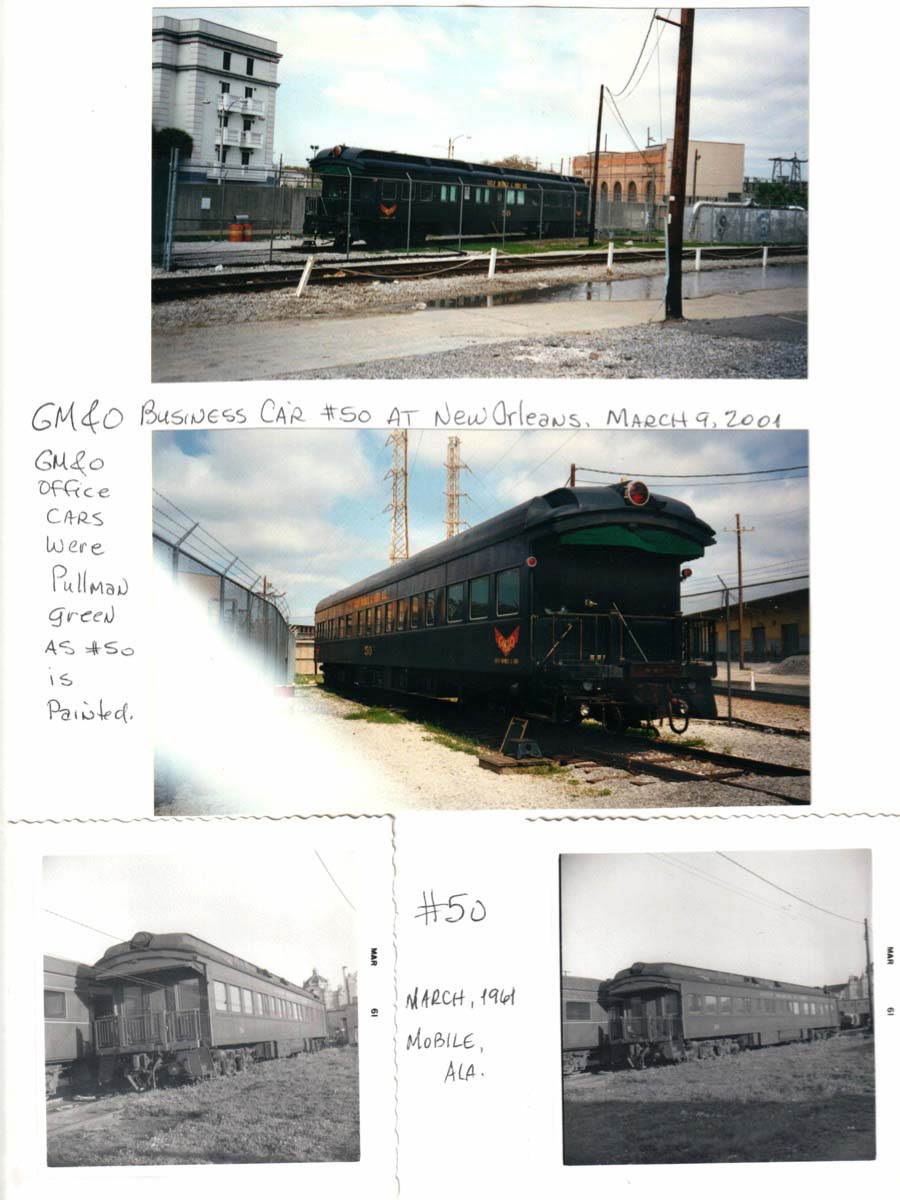
all pages from Gulf, Mobile & Ohio scrapbook / JCH
Lagniappe



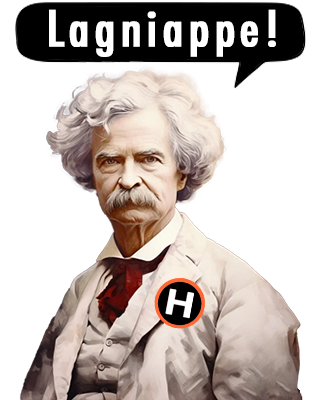
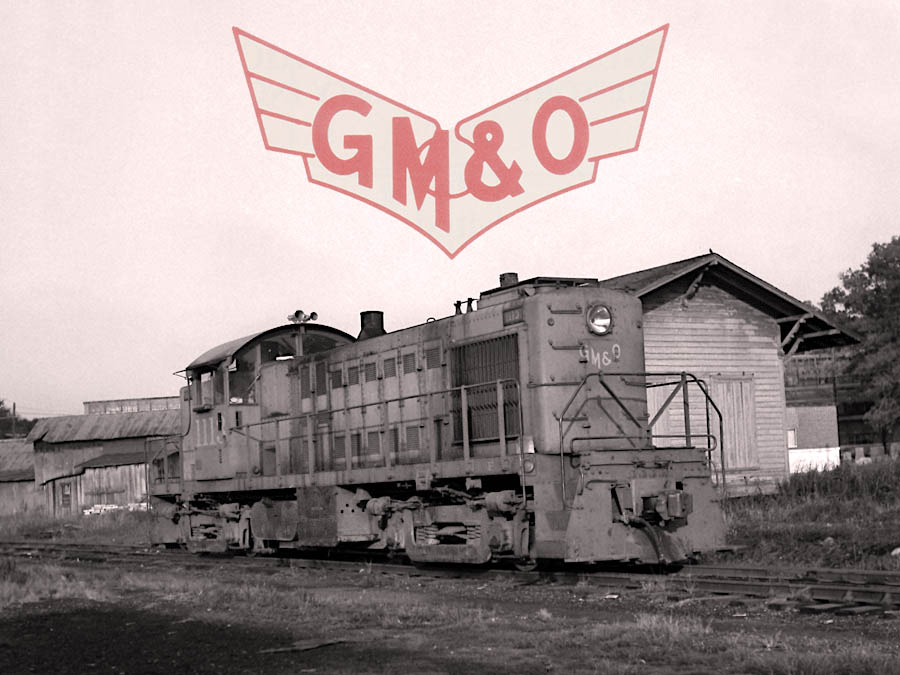
First Generation
Columbus, Ms / Aug 1970 / JCH
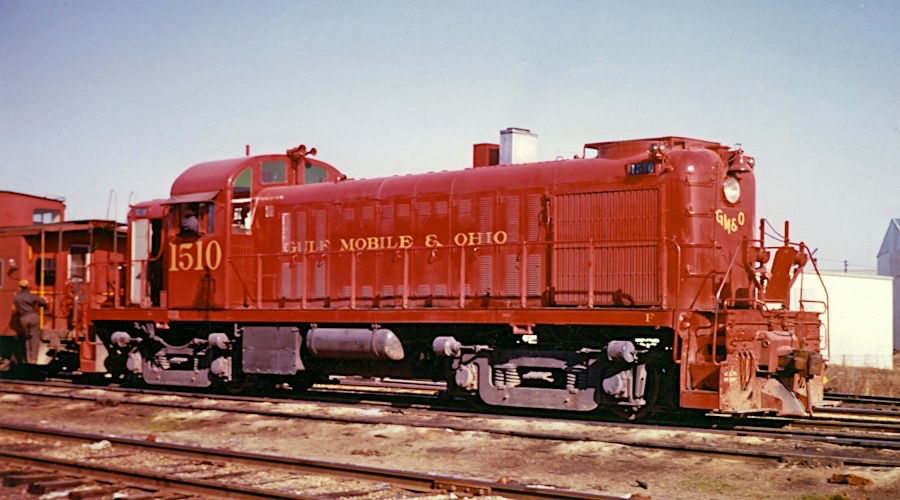
Saturated Road Switcher
Jackson, Ms / Mar 1969 / collection
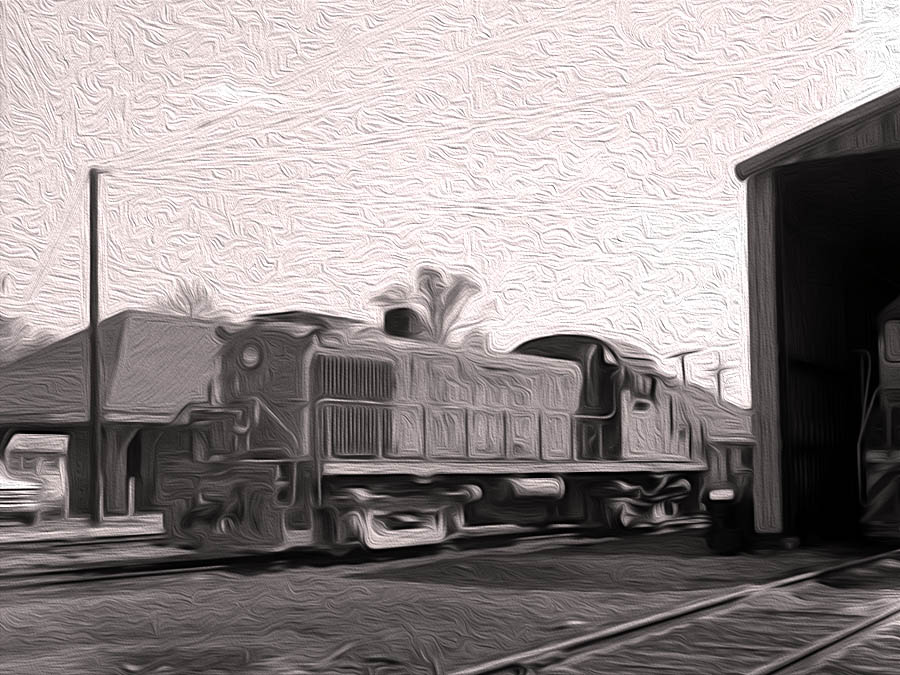
Alco Afternoon
RWH
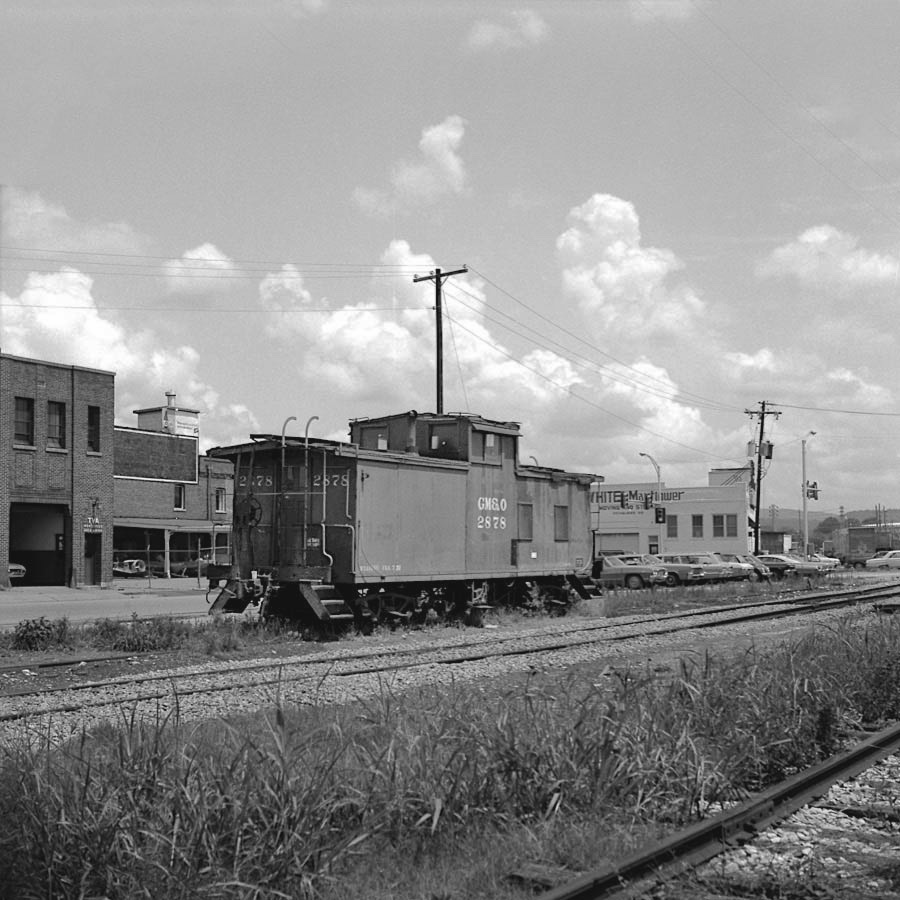
Goin' to the End of the Line
Huntsville, Al / 1975 / JCH

White Flag Wonderful
collection
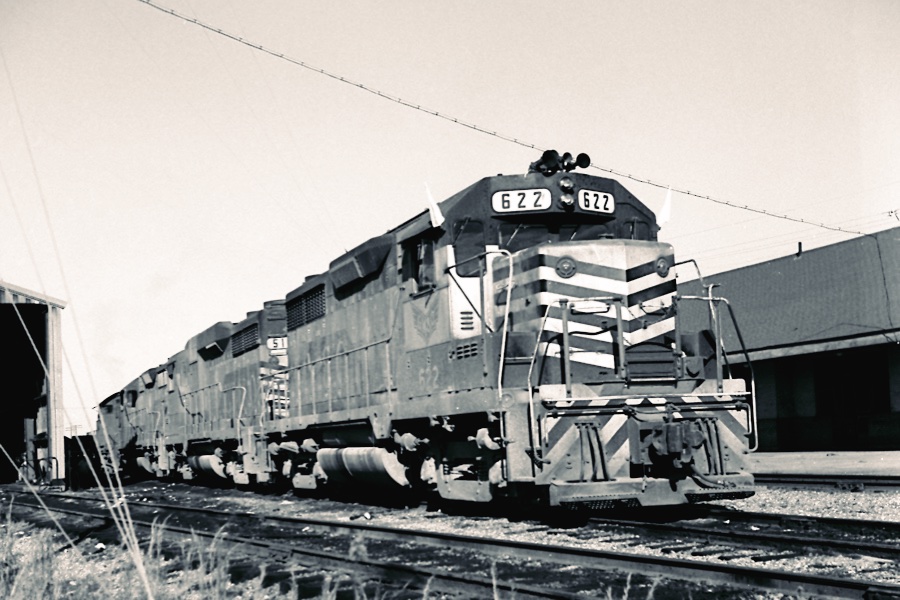
Bogalusa Power Supply
Bogalusa, La / Dec 1970 / JCH

Long Live the Rebel Route
RWH
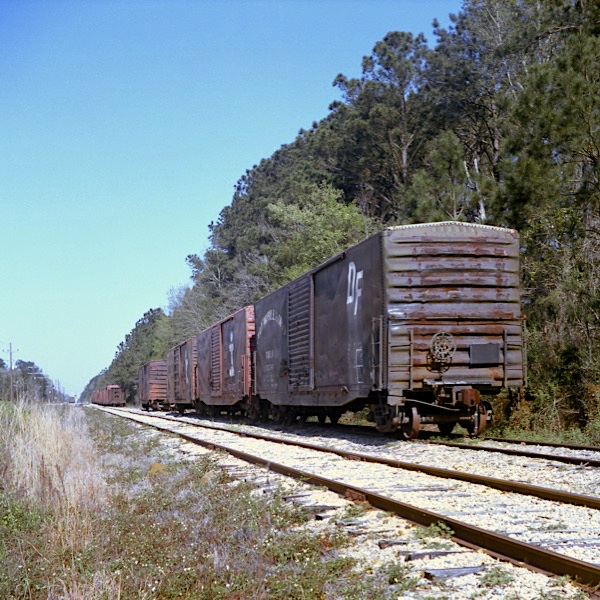
Orphans in Lacombe
Lacombe, La / May 1986 / JCH
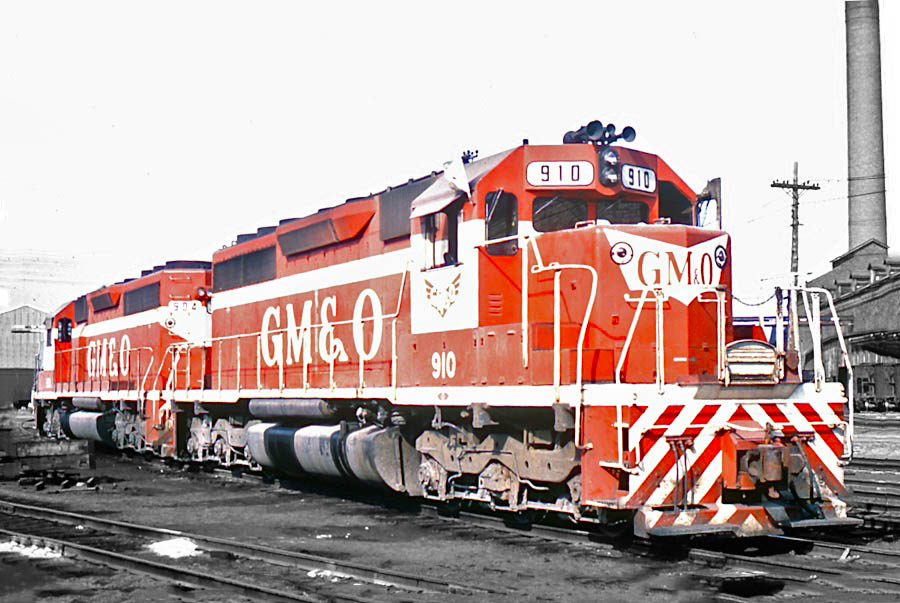
Big Reds Ready
collection
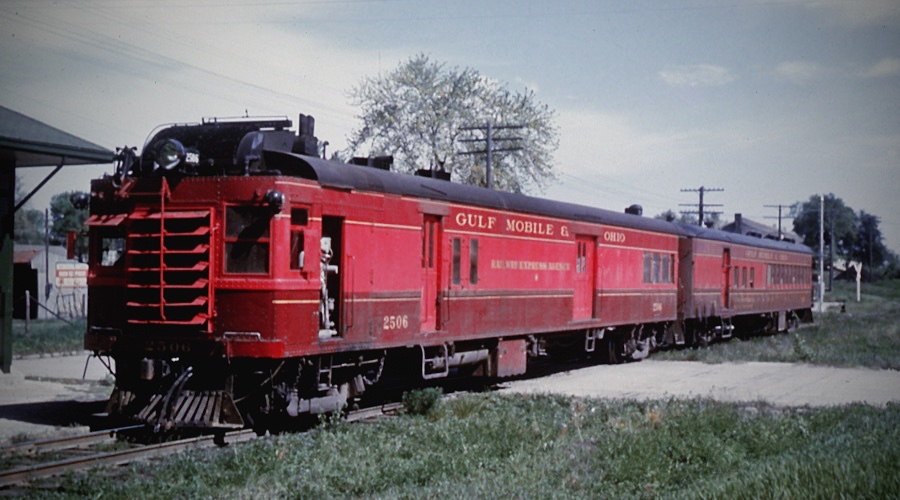
Doodlebug Days
collection

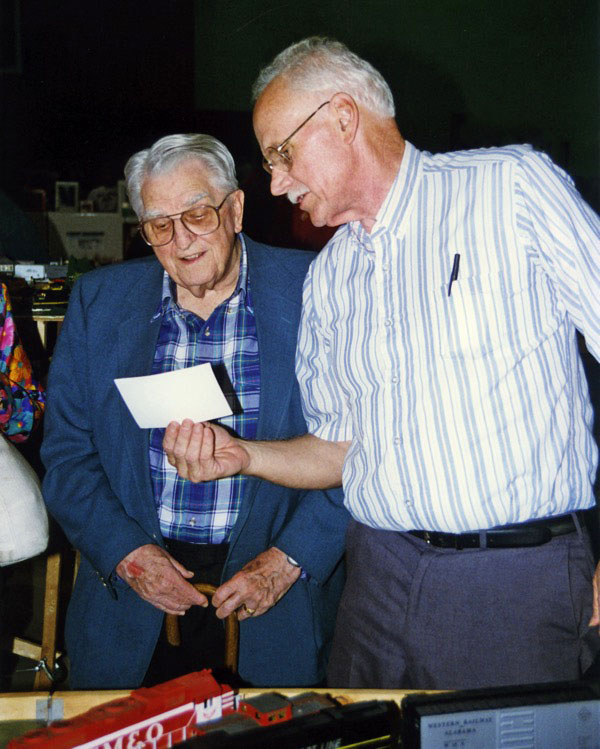 Throughout the 1980s and 90s, dad and I enjoyed running O scale trains at numerous railroad shows with fellow modeler and beloved friend Gordon Payne and our shared portable layout. We participated in many shows and meets around the Deep South, running trains and meeting fellow modelers and railfans. In January 1995, as I was home from college, we set up for a railroad show in Mobile, Alabama. Given the location, dad was sure the bring plenty of our O scale Gulf, Mobile & Ohio equipment to run. Since his childhood, the GM&O was one of his favorite roads. He was not going to miss the opportunity to run some Rebel Route power and rolling stock in the road's namesake town.
Throughout the 1980s and 90s, dad and I enjoyed running O scale trains at numerous railroad shows with fellow modeler and beloved friend Gordon Payne and our shared portable layout. We participated in many shows and meets around the Deep South, running trains and meeting fellow modelers and railfans. In January 1995, as I was home from college, we set up for a railroad show in Mobile, Alabama. Given the location, dad was sure the bring plenty of our O scale Gulf, Mobile & Ohio equipment to run. Since his childhood, the GM&O was one of his favorite roads. He was not going to miss the opportunity to run some Rebel Route power and rolling stock in the road's namesake town.
During the show, we met a kindly older gentlemen who took great interest in our GM&O equipment — especially the long string of maroon and gold passenger cars running around the portable mainline loop. Never at a loss for conversation, dad quickly discovered why his new acquaintance was so fond of the Rebel Route: he was B. V. Bodie, retired Executive Vice President of the GM&O and its last General Manager before the Illinois Central Gulf merger. Mr. Bodie was thrilled to see the old familiar Rebel paint schemes in 1:48 form.
And you would have thought my father had met King George VI.
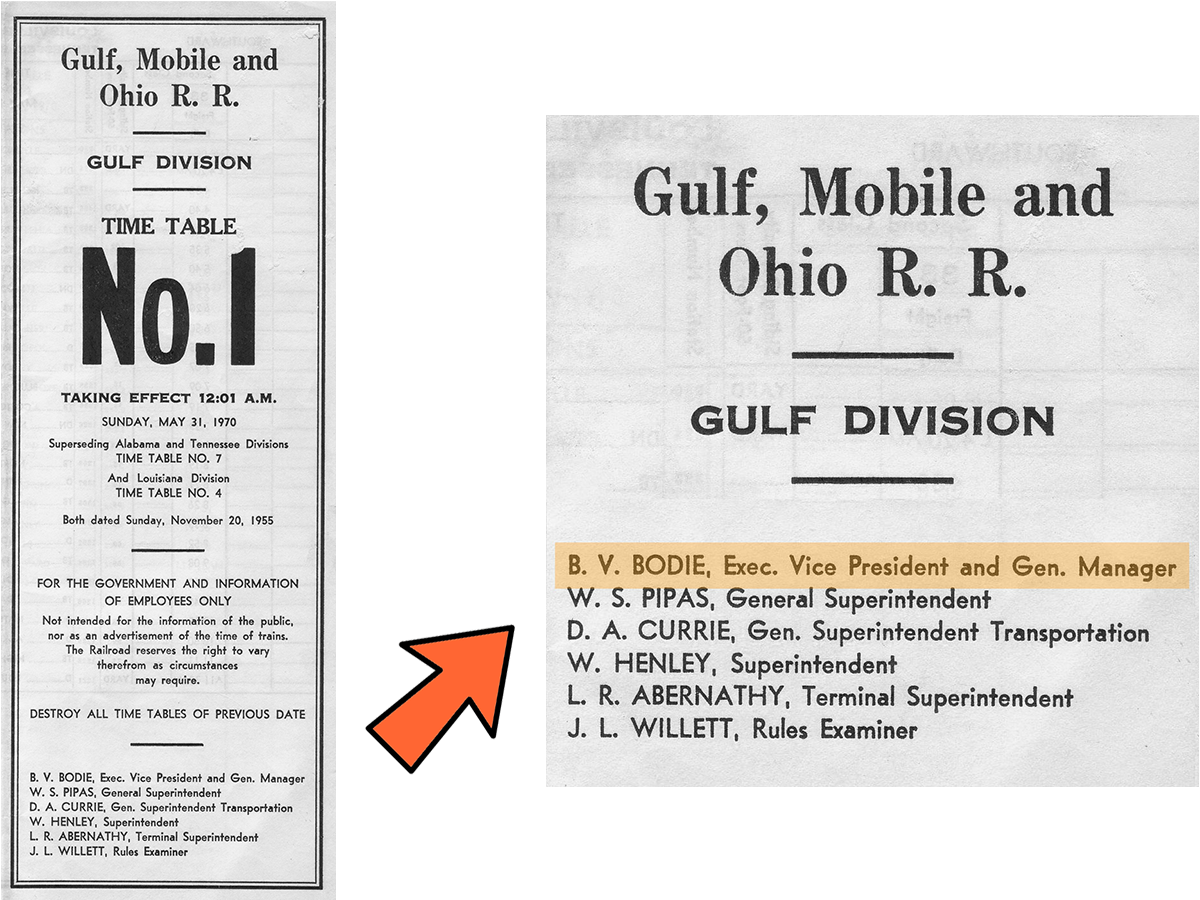
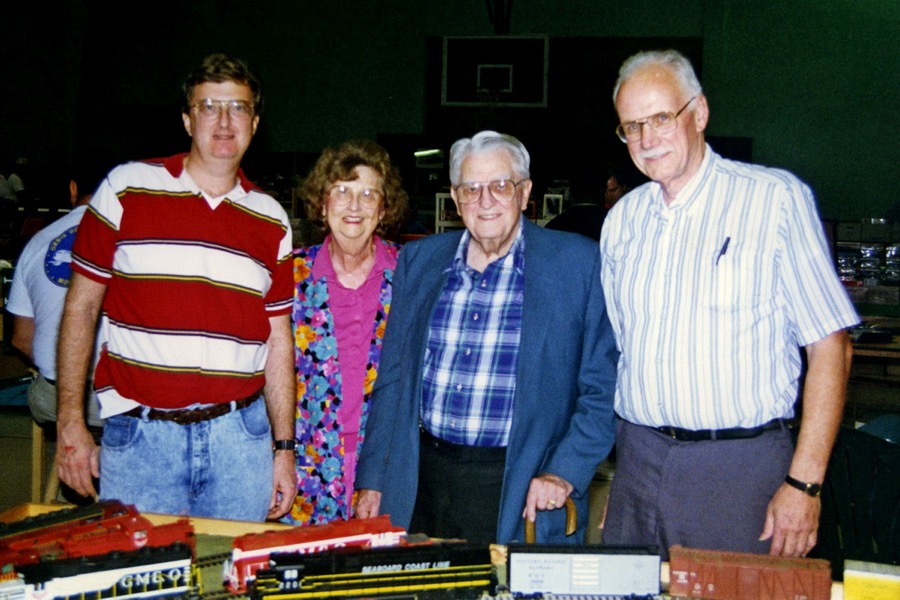
Mobile, Al / Jan 1995 / RWH
Links / Sources
- Gulf, Mobile & Ohio Historical Society
- Diesel Shop roster for Gulf Mobile & Ohio
- Jim's all time GM&O Diesel Roster
- Wikipedia article for Gulf, Mobile & Ohio Railroad
- The Gulf, Mobile and Ohio by James H. Lemly
- R.R. Dick Wallin, Gulf, Mobile & Ohio Color Pictorial (Four Ways West Publications, 1996)
- Historical Guide to North American Railroads - Second Edition (Kalmbach, 2000) 187-89
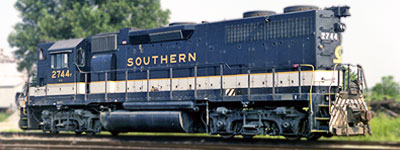
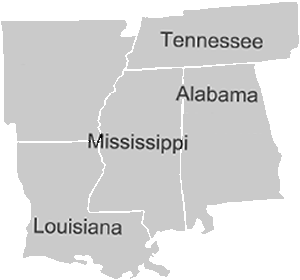

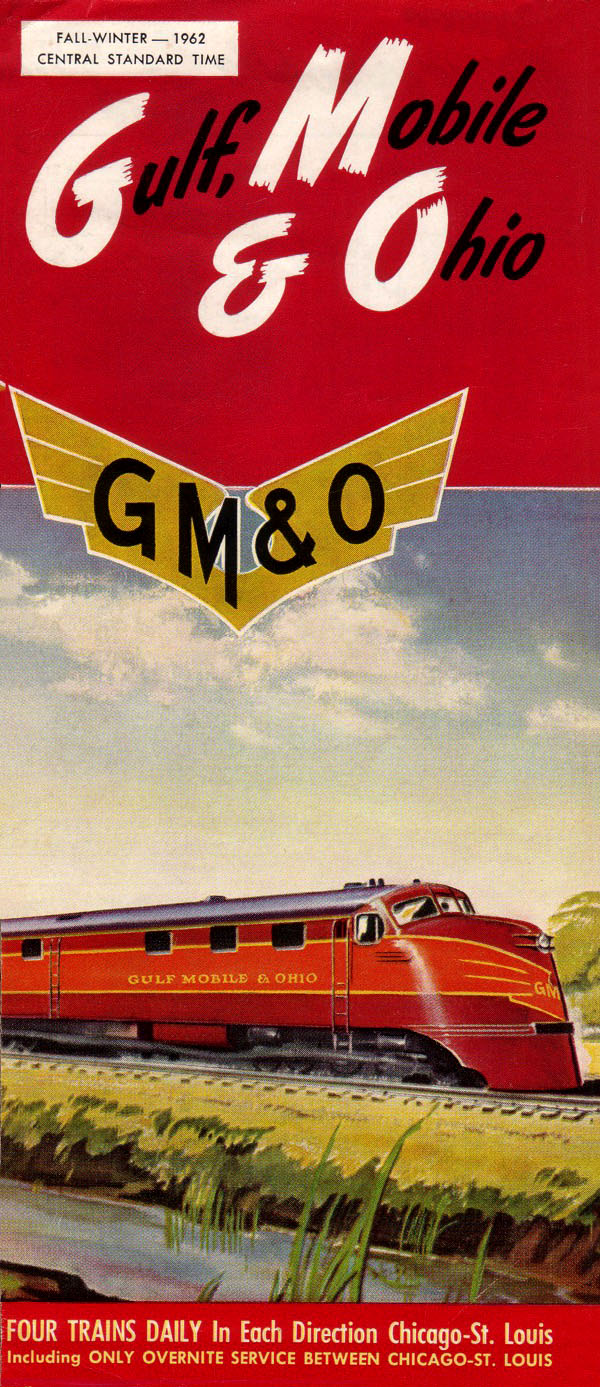

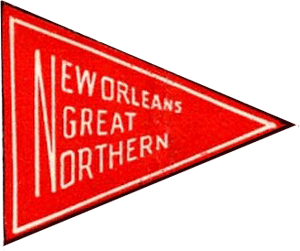

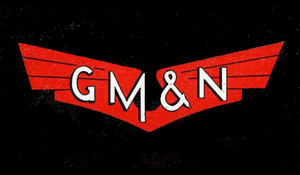

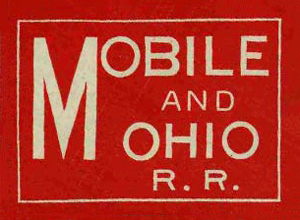
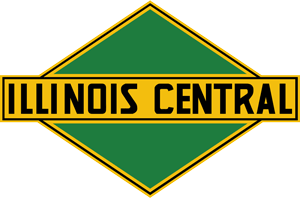
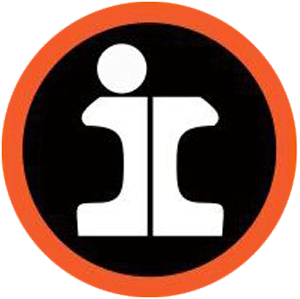

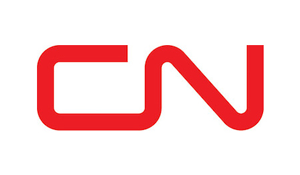




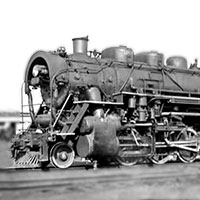

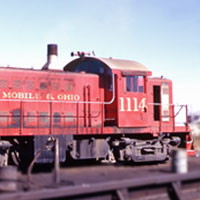

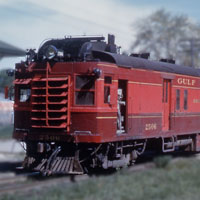
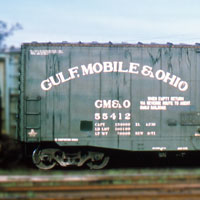
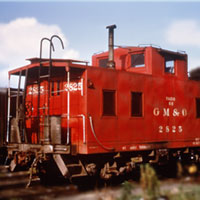
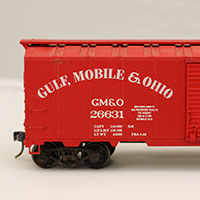
 Gulf States
Gulf States